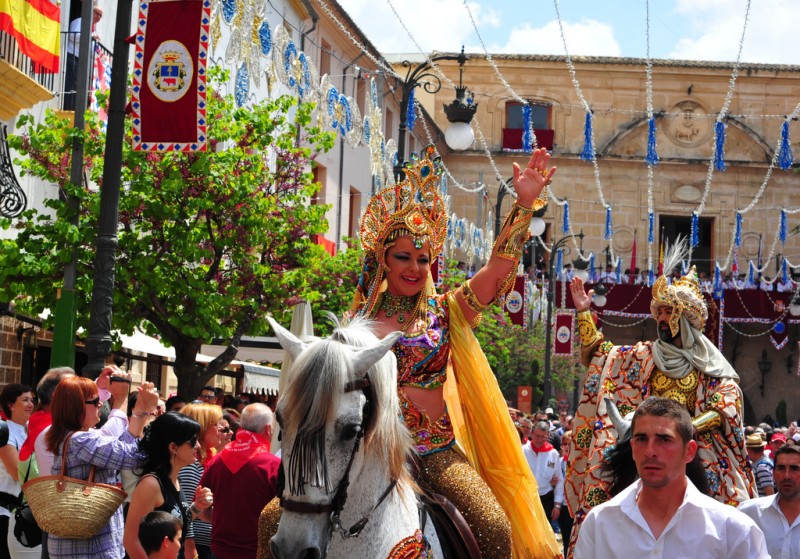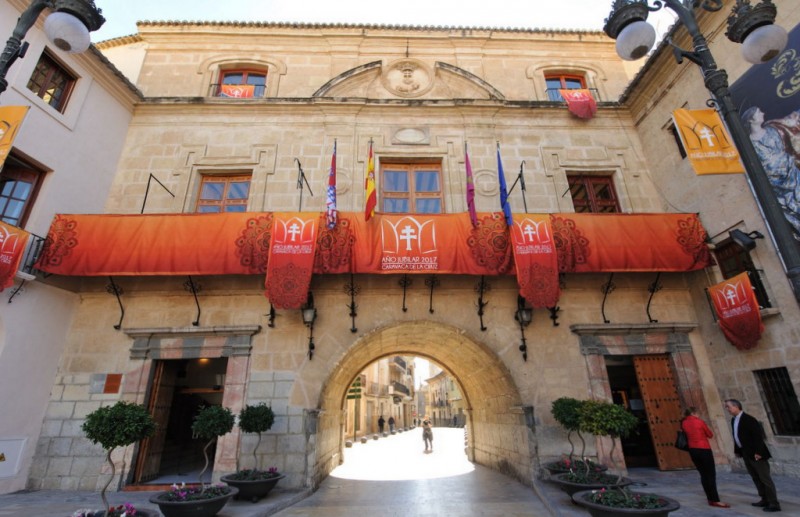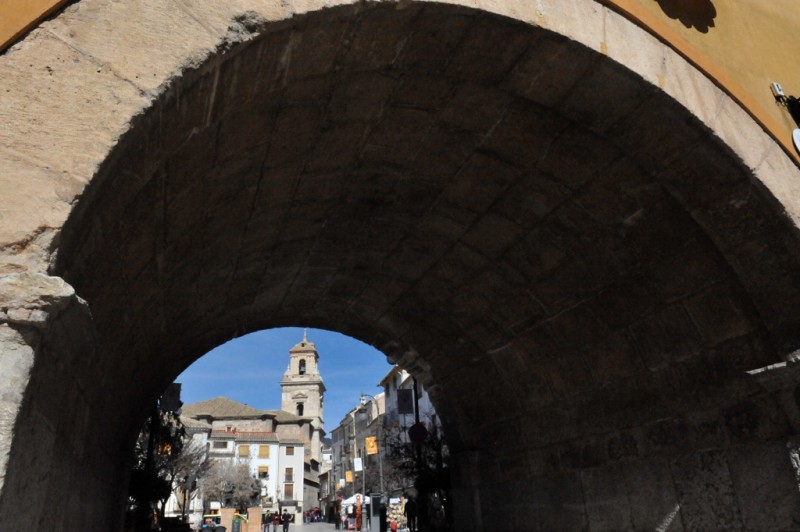- Region
- Vega baja
- Marina Alta
- Marina Baixa
- Alicante
- Baix Vinalopo
- Alto & Mitja Vinalopo
-
ALL TOWNS
- ALICANTE TOWNS
- Albatera
- Alfaz Del Pi
- Alicante City
- Alcoy
- Almoradi
- Benitatxell
- Bigastro
- Benferri
- Benidorm
- Calosa de Segura
- Calpe
- Catral
- Costa Blanca
- Cox
- Daya Vieja
- Denia
- Elche
- Elda
- Granja de Rocamora
- Guardamar del Segura
- Jacarilla
- Los Montesinos
- Orihuela
- Pedreguer
- Pilar de Horadada
- Playa Flamenca
- Quesada
- Rafal
- Redovan
- Rojales
- San Isidro
- Torrevieja
- Comunidad Valenciana
The Town Hall of Caravaca de la Cruz
The Casa Consistorial in Caravaca dates from the 18th century
 The baroque Casa Consistorial, the main Town Hall building in Caravaca de la Cruz, is in the Plaza del Arco at the foot of the hill on which the castle-sanctuary stands, and is one of the most instantly recognized of the many historically important buildings in the city due principally to the arch which spans the main street of Calle Puentecilla.
The baroque Casa Consistorial, the main Town Hall building in Caravaca de la Cruz, is in the Plaza del Arco at the foot of the hill on which the castle-sanctuary stands, and is one of the most instantly recognized of the many historically important buildings in the city due principally to the arch which spans the main street of Calle Puentecilla.

History
The Town Hall building dates from the 18th century, when the “Concejo”, or council, decided that a new home was needed to replace the Casa Consistorial in the medieval centre of the city. The building which was approved in 1737 was designed by Jaime Bort, who was also responsible for the baroque façade of the Cathedral of Murcia, although it was later modified by Friar Juan de Santa Teresa and Juan García, and the construction work itself was supervised by Caravaca-born Antonio del Campo.
Building work got under way and was completed in 1762, enabling the first session of the Concejo to be held here on 3rd January 1763, but the archives from the previous building were transferred, and some dating from as long ago as 1345 are still kept here.
During the 18th century Caravaca de la Cruz’s economy was prosperous enough to allow significant urban development, and the new Town Hall was by no means the only prestigious building to appear at the time. In the Calle de las Monjas, for example, there are numerous impressive houses with monumental doorways, which at the time belonged to illustrious families keen to show off their wealth.

Apart from the arch, the façade of the building features two doorways in red and black marble from Peña Rubia and the large balcony on the first floor.
The Town Hall of Caravaca de la Cruz was declared a historical and artistic monument on 2nd June 1982 and features prominently in all of the major celebrations within the city, the plaza in front of it a principal gathering point and the arch beneath it viewed as being the dividing point between the older area of the city, the casco antiguo, and the newer modern city which has grown up at its feet.
Address: Plaza del Arco, 1, 30400 Caravaca de la Cruz
Telephone: 968 702000
Further information about Caravaca is available from the tourist office (Plaza de España, 7, telephone 968 702424, email turismo@caravacadelacruz.es).
Or for more local information, including the Holy Jubilee Year as well as local news and what’s on, go to the home page of Caravaca Today.
staff.inc.ali


